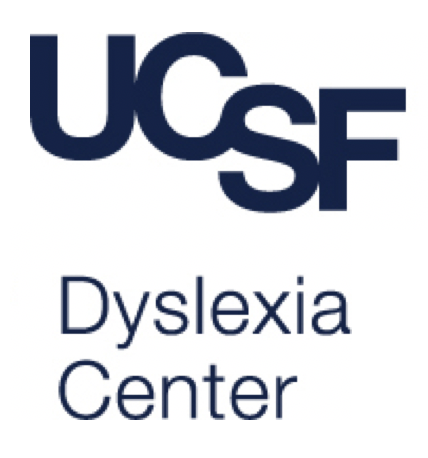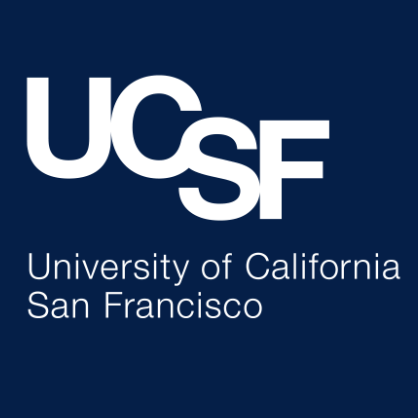Personalized Strategies for Dyslexia: Differences, Recognition and Treatment
As neuroscience rapidly advances in the 21st century, there is an emerging recognition that the brain is no different than the heart. Its health and therefore its cognitive functions are heavily influenced by physical health and exercise, diet and nutrition, and social engagement. This new paradigm of thinking that a brain’s health and performance can be impacted by purposeful behavior and interventions has profound implications for classroom learning of future generations. In fact, it may be the key that unlocks the continuing global crisis in our education system.
Traditionally, UCSF is an institution primarily focused on addressing medical disease and solving health issues with a multidisciplinary team of world class medical researchers. The UCSF Dyslexia Center is applying this same talent and research methodologies to address the 63% failure rate in the US education system (growing to 67% failure by 8th grade).
Dyslexia is something researchers have only recently begun to understand. It’s common knowledge that dyslexia represents a difficulty learning to read, but it’s much more. Researchers at the UCSF Dyslexia Center have learned that there are many different dyslexia subtypes. Some children just aren’t reading. Others are having trouble with phonics. Reading difficulties often go unrecognized, and even when kids are treated, they are often not treated for their specific subtype. Consequences for this continuing struggle can be grave. Children struggle, feel depressed or anxious, and fall behind their peers. What we are learning about dyslexia, leads to research and translation with broader implications for education and personalized learning.
The UCSF Dyslexia Center
The UCSF Dyslexia Center is a collaboration between four researchers (Marilu Gorno Tempini, Bruce Miller, Robert L Hendren, and Fumiko Hoeft), two Departments at UCSF (Psychiatry and Neurology), and collaboration with the Charles Armstrong School in Belmont, CA, a school with over 250 students with dyslexia. This collaboration has expanded to other Departments and is expanding to other specialized schools, charter schools and soon, public schools.
Their research can best be categorized into three ongoing stages.
I. Cognitive, Anatomical and Biological Phenotyping
UCSF Dyslexia Center leverages cutting-edge scientific and clinical expertise available at UCSF to define and validate the presence of neurological phenotypes of dyslexia based on a combination of strengths and weaknesses in linguistic, cognitive, emotional, neuroanatomical and biological features. The study evaluates the ‘whole brain’ in order to examine the interactions between different domains of behavior, such language, emotional, mathematical, executive functioning etc. and determine interventions that are best tailored to each individual’s strength and weaknesses.
In the past two years, researchers have extensively examined about 150 children with dyslexia, and then provided in-person detailed feedback to families and teaching teams, a written report, and a school visit for each of the Armstrong children enrolled in the study.
In the near future (1-2 years) the lab intends to extend their collaboration to other schools in the bay area, evaluate children over time, determine how effective their interventions are, collaborate with neurobiologists and neurogeneticists at UCSF to study brain tissue and plan for implementation of a clinical service for children and families in the bay area.
II. Screening Application
Application for Readiness In School & Learning Evaluation (AppRISE) is an open-source tablet-based app that assesses school readiness and screens dyslexia-risk. It was created for children in preschool to early elementary grades. The app designers and researchers leverage the latest cognitive science evidence, and continuously integrate findings from the Phenotyping project. AppRISE assesses 13 domains of cognition, literacy and language, all processes known to be critical for academic success (in addition to socio-emotional competency, which is also crucial).
Notably, it was developed with no written or spoken English instructions and with no need for formal training. This allows untrained parents, teachers and pediatricians who may not understand English to guide their children and students for assessment. These features make AppRISE ideal for small group administration, and use in low-resourced areas in children from ALL racial, language and financial backgrounds around the country. This app is currently the only scalable solution that is being rigorously validated, that assesses strengths and weaknesses, and that has the potential to be used to identify personalized learner profiles.
The lab’s long-term goals for AppRISE include the R&D and distribution of the complete version:
-
Making the entire system available at no cost on Google Play
-
R&D of additional modules
-
Large-scale validation through download across the U.S.
-
Validation in children older than kindergarten age
-
R&D of dashboard features
-
R&D of teacher training apps, and R&D of digital cognitive, language, and literacy training programs
III. UCSF/Charles Armstrong School Collaboration to Track Outcomes
During the last year, the lab successfully implemented eBit, their online longitudinal data collection platform, gaining a 98% response rate from parents and a 100% response rate from teachers. They have completed fove survey cycles as of summer 2018, using a mixture of “gold standard” and internally developed measures, along with standardized testing done at Charles Armstrong School, to track outcomes in areas that include social functioning, anxiety, resilience, internalizing and externalizing behaviors, attention and hyperactivity, learning strategies, and academic progress.
On eBit, researchers can track interventions that parents and teachers have implemented using the phenotype or types since the student’s case conference, to understand the relationship between interventions and parent/teacher knowledge of the student’s phenotype. Their goal is to connect interventions to phenotypes and outcomes. The recepton of teachers and parents has been enthusiasitc and appreciative.
One of the main goals over the next one to two years as the lab continues its work is to enroll all Armstrong students who are going to be in the phenotyping study to be in the outcomes study, to ensure collection of baseline data before their conference. Additional goals include adding 1-2 more schools using eBit to track outcomes and continuing to develop school-specific outcomes measures. The lab is finalizing plans to work with the Athena Academy in Palo Alto and the Chartwell School in Monterrey to implement a partnership with the UCSF Dyslexia Center. Expanding the work will guide researchers in assessing the generalizability of the phenotype, interventions and outcome measures used in each setting as they move to use this knowledge in public school and health settings.
Great progress has been made in understanding the brain-basis of dyslexia, but despite these advances, care and education of children and adults with dyslexia has not significantly improved. The University of California San Francisco (UCSF) is uniquely positioned to address all of these challenges, simultaneously, through the UCSF Dyslexia Center and remarkable partnerships among the departments of Neurology, Psychiatry, and the basic neurosciences. Scientists in these different disciplines are identifying subtypes of dyslexia and other learning differences based on cognitive, neuroanatomical and socio-emotional strengths and weaknesses, and testing personalized interventions to see if this approach can be used for children with specific learning profiles.
Bio
The mission of the UCSF Dyslexia Center is to eliminate the debilitating effects of developmental dyslexia while preserving and even enhancing the relative strengths of each individual. They also aim to develop best practice protocols to implement individually catered interventions in classrooms throughout the United States.


